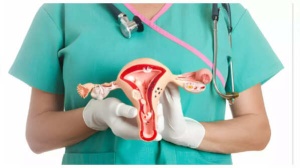Cervical cancer, a malignant condition originating in the cervix, the lower part of the uterus connecting to the vagina, is primarily triggered by persistent infection with specific types of human papillomavirus (HPV), a prevalent sexually transmitted infection. While most HPV infections resolve naturally, enduring infections with high-risk HPV strains can lead to cervical cancer. Early detection is crucial for effective treatment. The slow progression of this cancer, however, means that some telltale signs are often dismissed.

One of the earliest indicators of cervical cancer is abnormal vaginal bleeding, which can manifest as:
Irregular bleeding is common and can stem from various causes, leading many women to dismiss it as hormonal fluctuations or infections. If you observe bleeding that deviates from your typical pattern, it is essential to consult a healthcare provider, even if it is not cancer.

A small amount of vaginal discharge is typical, especially around ovulation. However, alterations in discharge characteristics can signal an underlying issue. While normal vaginal discharge varies in amount and texture throughout the menstrual cycle, cervical cancer may cause discharge that is:
This type of discharge may occur between periods or following menopause. While easily mistaken for infection or irritation, it warrants medical evaluation.

Experiencing pain or discomfort during sexual activity can be attributed to various conditions, including infections or hormonal shifts. However, it can also serve as an early symptom of cervical cancer. The pain might manifest as:
Due to the personal nature of this symptom, many women hesitate to discuss it. Persistent pain during intercourse is not normal and requires assessment by a healthcare professional to rule out serious causes, including cervical cancer.

Mild lower back or pelvic pain can arise from common factors like muscle strain or menstrual cramps. However, persistent or unexplained pain in these areas, particularly when accompanied by abnormal bleeding or discharge, could be an early indicator of cervical cancer.
The pain is often characterized as a dull ache or pressure between the hip bones or in the lower abdomen. Its commonality often leads to it being overlooked or attributed to less serious causes. If pelvic or lower back pain persists despite home remedies, medical evaluation is necessary.

Early cervical cancer can impact adjacent tissues, including the bladder and urinary tract, leading to symptoms like:
These symptoms are often mistaken for urinary tract infections (UTIs), which are prevalent among women. If urinary symptoms persist despite UTI treatment, further investigation is warranted to exclude cervical cancer.

Awareness and regular health checkups are paramount for early detection. The HPV vaccine provides protection against HPV types responsible for cervical, vaginal, vulvar, penile, anal, and oropharyngeal cancers, as well as genital warts. Women can receive the vaccine as early as 11 or 12 years of age, up to the age of 45 (consult your doctor).

Disclaimer: This article serves informational purposes only and does not substitute professional medical advice. If you experience any of these symptoms, consult with a qualified healthcare provider.
Newer articles
Older articles
 Cervical Cancer: Don't Ignore These 5 Subtle Warning Signs
Cervical Cancer: Don't Ignore These 5 Subtle Warning Signs
 Bezos-Backed Methane-Tracking Satellite Suffers Mission-Ending Failure in Orbit
Bezos-Backed Methane-Tracking Satellite Suffers Mission-Ending Failure in Orbit
 Rishabh Pant's Revolutionary Cricket Reshaping the Game, Says Greg Chappell
Rishabh Pant's Revolutionary Cricket Reshaping the Game, Says Greg Chappell
 Bangladesh Test Captain Najmul Hossain Shanto Resigns After Sri Lanka Defeat
Bangladesh Test Captain Najmul Hossain Shanto Resigns After Sri Lanka Defeat
 Greg Chappell Hails Rishabh Pant's 'Game-Changing' Batting Display Against England
Greg Chappell Hails Rishabh Pant's 'Game-Changing' Batting Display Against England
 Colon Cancer: 5 Subtle Warning Signs You Shouldn't Ignore
Colon Cancer: 5 Subtle Warning Signs You Shouldn't Ignore
 Gujarat Cricket Association Set to Debut T20 League in 2025-26 Season
Gujarat Cricket Association Set to Debut T20 League in 2025-26 Season
 England Captain Stokes Praises Opening Duo After Record-Breaking Chase Against India
England Captain Stokes Praises Opening Duo After Record-Breaking Chase Against India
 'The Traitors' Star Apoorva Mukhija Accuses Sudhanshu Pandey of Abusive Language, Misogyny Following Show's Finale
'The Traitors' Star Apoorva Mukhija Accuses Sudhanshu Pandey of Abusive Language, Misogyny Following Show's Finale
 Bangladesh's Shadman Islam Rallying Behind Teammates After Day 1 Batting Woes vs. Sri Lanka
Bangladesh's Shadman Islam Rallying Behind Teammates After Day 1 Batting Woes vs. Sri Lanka